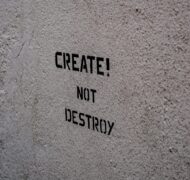Restorative Justice (Written 2011)
Book / Produced by partner of TOW
The most common understanding of restorative justice encompasses the theory and practice of justice-making in which relationships are restored. While there is no clear consensus among leading restorative justice theorists and practitioners over its essential nature, there is some common ground in relation to the following two principles: ‘first, justice requires that we work to heal victims, offenders and communities that have been injured by crime. Second, victims, offenders and communities should have the opportunity for active involvement in the justice process as early and as fully as possible’.[1] Just outcomes are primarily relational. The principles outlined above have been worked into the following definitions of restorative justice from two distinct perspectives: Howard Zehr’s based on his experience as a practitioner and Desmond Tutu speaking as a pastor-theologian:
Zehr: Restorative justice is a process to involve, to the extent possible, those who have a stake in a specific offense and to collectively identify and address harms, needs, and obligations, in order to heal and put things as right as possible.[2]
Tutu: [in] restorative justice, the central concern is not retribution or punishment…in the spirit of ubuntu, the central concern is the healing of breaches, the redressing of imbalances, the restoration of broken relationships, a seeking to rehabilitate both the victim and the perpetrator, who should be given the opportunity to be reintegrated into the community he has injured by his offence.[3]
These definitions highlight an approach that seeks to put things right within a context of multiple stakeholders. How did restorative justice come about?
Developed in 1991 by police officers as an alternative to the ineffective practice of merely cautioning young offenders, the conferencing model at Wagga Wagga (in rural Australia) drew initially upon procedures used in the New Zealand family group conference. Those early trials in rural New South Wales[4] with youth law reform programs in New Zealand[5] identify the Pacific region as the ‘birthplace of the restorative justice movement’ (while some observers of the movement discern elements of Indigenous and other ancient forms of justice).[6] Terry O’Connell was a pivotal figure in those conferences and is widely known as the ‘cop from Wagga Wagga’ in restorative justice circles. O’Connell developed a script for experimental conferences revolving around a series of questions that focused attention on the impact of wrongdoing on various stakeholders including victims, offenders and their wider circle of family and friends.[7] The inner working of the restorative justice conference following a murder were portrayed in the documentary Facing the Demons.[8] O’Connell featured in the documentary as the facilitator asking questions to determine what happened, what the offender was thinking about at the time of the offence, what they have thought about since offending, who had been affected by what the offender did and what the offender needed to do in order to make things right? The script is essentially the scaffolding for a conference that is only one of several contexts in which such questions might be used. A range of new opportunities for restorative justice are emerging – beyond the criminal justice system – in schools, workplaces and neighbourhoods. O’Connell explains that most conferences he personally facilitated were ‘for mundane day-to-day issues in families, communities, workplaces, schools, and a variety of other settings.’[9] These settings are where an everyday Christianity demonstrates its potential.
Biblical justice, interpreted as shalom, has been a significant element in much restorative justice literature. The formative studies in restorative justice literature were inspired by the Hebrew Scriptures, particularly the Prophets, which call for the actual practice of justice, and not merely the articulation of a concept of justice.[10] Oft-cited examples of such holistic appeals include ‘hold fast to justice’ (Hosea 12:6), ‘establish justice’ (Amos 5:15), ‘do justice’ (Micah 6:8) and the prophet Isaiah’s vision of the proper worship of God as the enacting of justice.[11] Theological contributions to restorative justice have depended mostly on these Old Testament notions, and are beginning to engage with the Gospels and the Pauline letters.[12]
The integration of biblical and practical approaches in restorative justice was evident in the Truth and Reconciliation Commission convened to deal with apartheid-era violence in South Africa. Philosopher Charles Taylor considered the commission satisfied the dual requirements of justice and truth because it is able ‘to bring terrible deeds to light, but not necessarily in a context of retribution.’[13] Significantly it is the centre of Christian theology – Jesus’ life, death and resurrection – which informs and enables justice and reconciliation to be achieved.
Through Luke’s holistic account of Jesus Christ, the central role of enemy-love is seen in what Jesus taught (Luke 6:27-45); the manner he lived, the reasons why he died (Luke 23:26-49); his risen life (Acts 9:1-31); and the communities animated by his Spirit (such at Philippi, Acts 16:6-40). Enemy-love not only holds together the demands of reconciliation and justice, but is attentive to obligations of post-reconciliation justice. When the enemy is loved to the point where they have become a neighbour, a guest or even a friend, the obligation to ‘make amends’ emerges from the reconciled relationship. To date, most Christian contributions to the everyday practices of restorative justice have concerned Jesus’ commitment to nonviolence. By recognising the significance of Jesus’ enemy-love, a related set of restorative justice practices emerge that are more integrated with Jesus’ life and death. For example, three imaginative practices within the teaching of Jesus about enemy-love include: remembering wrongdoing and injustice truthfully; seeing enemies as neighbours and desiring reconciliation so that enemies are justly restored and not justly condemned. An imagination renewed by the Kingdom of God leads naturally to other practices: conversational practices include naming, questioning and forgiving by victims, wrongdoers and their respective communities.
The everyday Christian practices for conversations about wrongdoing involve naming (or judging) the wrongdoing, questioning and forgiving. These practices deepen and enhance the standard ‘script’ of restorative justice that remain focused on what happened. ‘Naming’ wrongdoing is expressed by the victim as testimony, the wrongdoer as confession and the community through transparent lives. What do each of these involve? The victim’s version of ‘what happened’ is a fundamental component of the restorative justice process. The script used in some conference settings provide a series of questions for the victim including, ‘what impact has this incident had on you and others…[and] what has been the hardest thing for you?’ By simply asking these questions, and listening attentively to the answers, the victim’s need to be heard and understood is affirmed. Regrettably Christian communities, particularly in their institutional form (‘the Church’), have frequently failed victims by not providing sufficient time or a safe space for victim’s stories. Worse than the failure to listen is the indefensible pressure placed on some victims to remain silent. In too many cases it has been the courage, determination and commitment of victims to speak their truth that has forced a reluctant Church to listen. This must be emphasised: God hears the victim’s testimony even when God’s people are indifferent, reluctant or negligent in doing so. The victim’s story becomes a testimony when the wrongdoing is named before God who is the final Judge. In the garden and from the cross Jesus demonstrates faith in God as Judge. His words included prayers such as ‘not my will, but yours’ and ‘forgive them, Father’ and ‘into your hands I commit my spirit’. God’s judgment in Jesus Christ is a verdict of ‘yes’ that cancels the ‘no’ of wrongdoing. Victims hear God’s emphatic ‘no’ to the wrongs they suffered when they testify to what they suffered. Theologically, testimony transcends mere storytelling because God judges wrongdoing. There is a further practical consideration. We tell stories make sense of past events to make our lives meaningful. But the wrong suffered by some victims is simply inexplicable. In this instance stories seek to impose meaning where there is none. The category of ‘testimony’ protects this kind of wrongdoing from superficial explanations and the coherence enforced by a narrative. Testimony allows victims to simply tell God and others what happened without the need for it to make sense.
When the wrongdoer hears the testimony of his victim, the disciple of Jesus responds with confession. The admission of wrongdoing is called confession in theological language and liturgical practice and has three aspects to it. The first is confession to one another. Such confession must be carefully distinguished however, from rituals of public shaming. In confession the wrongdoer takes the initiative by accepting responsibility for the wrongdoing. The second aspect is including sins of omission (i.e. failing to choose right or proper actions) as well as sins of commission. Confession that includes the failure to do the right thing can be more truthful about wrongdoing suffered by victims. For example, when I apologise for my words because ‘my tone was rude and demanding’ I am really only confessing part of the wrong experienced by my victim. I am more truthful when my confession includes ‘I failed to treat you with respect’. The third aspect of confession is confessing wrongs as sin. This acknowledges that wrongdoing to others offends God as well.
A community committed to transparent living enables the testimony of victims and the confession of wrongdoers (whereas institutional forms of Christianity have often failed to be transparent about wrongdoing in their midst). Contemporary ethicists describe the ‘sunlight test’ for moral decision-making. Before an action is taken the person is asked to imagine its full exposure before family, friends and colleagues. Only actions that would still be taken with this kind of intense scrutiny ‘pass’ the sunlight test. This metaphor indicates the kind of transparency required for the difficult conversations within a community about past wrongs.
Restorative justice provides explicit practices such as these because enemy-love must be lived out in daily situations where wrongdoing happens in regular, social networks (between neighbours, colleagues and classmates). I will conclude by describing a model of the distinctive role of the Christian community for restorative justice involving local small business owners, street violence and a church.
St John’s Anglican Church, East Sydney is centrally located in its neighbourhood drawing people across a wide range of social strata including international tourists and backpackers, visiting sailors, the wealthy and influential, the marginalised and street people, the elderly and those suffering from addictions and mental health issues. The re-gentrification of recent decades generated debate and conflict, often witnessed as abuse and violence on the streets. A flash point erupted when a proliferation of footpath cafes and places with alfresco dining displaced ‘street people’ who had long-established business dealings (primarily prostitution and drug dealing) on the same footpaths. These were conducted within informal – but clearly demarcated – territories. Satisfactory resolution to the ensuing conflict was elusive despite a strong police presence and advocacy from the local Chamber of Commerce. St Johns Church had a history of caring for people in need and making abusive or violent people accountable through restorative justice conferences it facilitated. The church responded to the escalating violence by hosting a training day for local business owners and staff of local government agencies that was attended by approximately ninety participants. The training started with a gospel presentation of Jesus’ parable of the Good Samaritan (Luke 10). A drama of a typical confrontation between shop owners and street people was then presented with small group discussion facilitated by church staff. Key principles and practices from restorative justice were given followed by a second and revised drama of the conflict that modeled restorative justice. The training day generated spirited conversation and goodwill between the various groups (including a handful of street people). The impact spilled over into the local community with invitations for further training and collaboration.[14]
The reconciling, restorative justice of the Christian community is a compelling approach to justice because of Jesus Christ, who embodied God’s enemy-love as a saving victim and merciful judge.





